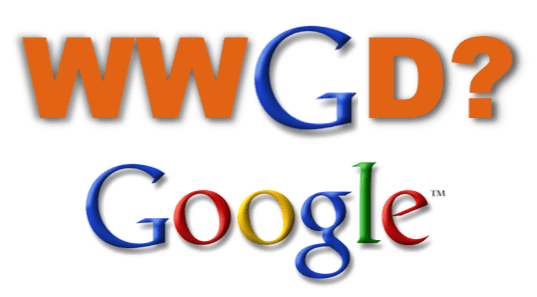How Ernst & Young staffs its enterprise search program

This is a guest blog post from Ed Dale, Search Services Manager at Digital Workplace Group (DWG) member Ernst & Young.
This post is based on a discussion thread from the confidential online DWG Member Network, where intranet professionals from large global companies discuss their intranet challenges in a private online setting.
A recent DWG member discussion online focused on the question “How do you staff an Enterprise Search practice?” This question prompted other DWG members to list the specific responsibilities that need to be covered by an enterprise search team.
However, to really understand the usefulness of those specific responsibilities it is important to know how to identify them. Ernst & Young has had an enterprise search programme for a long time and we have learned many lessons over more than a decade. One question in particular is helping us build a strong enterprise search practice today:
WWGD? (What would Google do?)
 At Ernst & Young we have had an enterprise search engine since 1999. The scope of that search was focused for much of that time on just the Knowledge content. This gave us a defined scope and a clear set of guidelines for the content of search.
At Ernst & Young we have had an enterprise search engine since 1999. The scope of that search was focused for much of that time on just the Knowledge content. This gave us a defined scope and a clear set of guidelines for the content of search.
When we discussed search with our users, we heard a very different set of expectations from search. They expected an “enterprise Google” which would search all content within the firm, returning only the content relevant to them. Meeting this much broader expectation is a significantly harder task, with a less focused scope and a very broad set of content.
How does Google do it?
We started by thinking about Google, and what users expect from Google. They expect that the search will be almost magical; a simple interface where they express a need and the need is answered, quickly and without much thought.
How does Google do this?
- They index a broad set of content
- The content is optimized for search, by the creators of the content
- They measure and tune the search to match the user’s needs
- They work to keep the search interface simple, but effective
- They understand the user’s needs and behaviour
- They provide a single place to go to find everything.
To do the same for enterprise search, you have to do similar things. You need to index everything. You have to work with your content creators to improve the findability of the content (SEO), if you want to learn more about SEO check out the Beginner’s Guide To SEO. You have to improve the relevancy, by measuring it and tuning it. You need to avoid creating an overly complex search page, but you need to provide tools to find the right content. You need to know who your users are, what they are looking for, and where they are expecting it to be.
Staffing an enterprise search team
We found that to do this, we needed more than one full time employee (FTE) working on search. We have a product manager responsible for the overall enterprise search function, including the stakeholder communication, and for setting the strategy and direction of the search engine.
We have a product manager responsible for findability, working with content creators to ensure the right content is surfaced.
We have an assistant product manager who works with the search logs and with our group of representative users to understand users needs and expectations.
We have a team of analysts who provide the measurements of precision, recall and mean reciprocal rank to optimize the search relevancy. They provide rigour for our proposed changes to the algorithm and the program.
And we have a team that manages the search “best bets” process.
I think a smaller firm, or one with less complex information needs, could do this with fewer people.
Planning for search in SharePoint 2013
SharePoint 2013 automates some of this for you. There is a tool on the Microsoft site that will take a set of queries, a set of correct responses for those queries and measure how well the search is performing today, and make recommendations for adjustments to the search engine to improve the response. It also provides an environment for testing both those adjustments and also the Query Rules and Results Types prior to moving them to production.
I expect that in the full 2013 environment, you will need to spend time and effort on these query rules. They are powerful, but could create poor results if configured incorrectly.
The bottom line is that to offer outstanding “Google-like” enterprise search you need to first ask how Google does it on the web, and then create a model for doing the same thing within your company.
If you are interested in more on the topic, I’ll be speaking at the European Enterprise Search Summit in London May 15th and 16th on this topic.
You may also be interested in the useful recent IBF research paper on enterprise search, authored by Martin White.
[ctaleft]What is DWG member “interaction”?[/ctaleft]
Categorised in: → Intranet usability, → Search and findability
